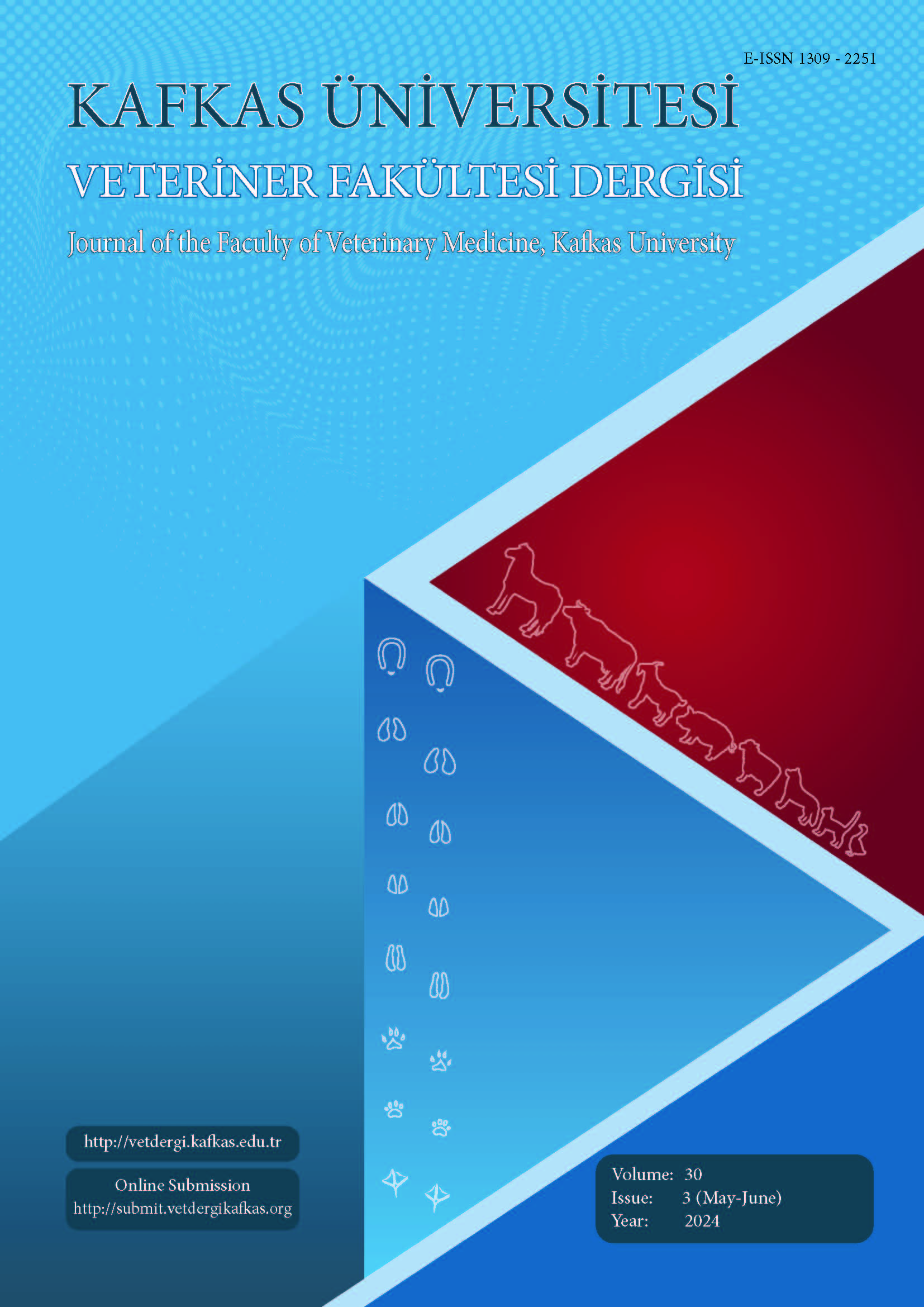
This journal is licensed under a Creative Commons Attribution-NonCommercial 4.0 International License
Kafkas Üniversitesi Veteriner Fakültesi Dergisi
2024 , Vol 30 , Issue 3
The Effect of Ferula communis L. on Body-Relative Organ Weight, Serum and Tissue Oxidative Status, Biochemical and Pathological Changes in Rats Exposed to Continuous Light
1Kafkas University, Faculty of Veterinary Medicine, Department of Animal Breeding and Husbandry, TR-36100 Kars - TÜRKİYE2Kafkas University, Faculty of Veterinary Medicine, Department of Physiology, TR-36100 Kars - TÜRKİYE
3Kafkas University, Faculty of Medicine, Department of Pathology, TR-36100 Kars - TÜRKİYE
4Kafkas University, Faculty of Veterinary Medicine, Department of Animal Nutrition and Nutritional Diseases, TR-36100 Kars - TÜRKİYE
5Kafkas University, Faculty of Veterinary Medicine, Department of Obstetrics and Gynecology, TR-36100 Kars - TÜRKİYE DOI : 10.9775/kvfd.2023.31403 The goal of this study was to investigate the effects of Ferula communis L. on growth performance, relative organ weights, tissue and serum oxidative status, and biochemical and histopathological changes in rats exposed to continuous light. Rats exposed to continuous light for 10 days were given F. communis orally. Daily body weight was recorded, and rats were euthanized by cervical dislocation. Blood was collected to determine relative organ weights, followed by immediate biochemical and histopathological analysis of the organs. Serum and tissue oxidative status were measured. Continuous light exposure in rats resulted in weight loss, decreased ovary, uterus, and kidney weights, diminished total antioxidant status (TAS) along with increased cortisol, total oxidant status, and oxidative stress index. However, F. communis treatment reduced serum cortisol concentration and alleviated oxidative stress by increasing TAS even under prolonged light exposure conditions. Neither continuous light exposure nor F. communis treatment caused significant changes in malondialdehyde and glutathione in organ tissues. Although continuous light caused an increase in the number of cystic follicles, F. communis treatment did not seem to have a positive effect on cystic follicle formation. In conclusion, continuous light exposure stressed the rats and increased cortisol, as well as stimulated oxidative stress and cystic follicle formation. F. communis treatment can help alleviate the harmful effects of constant light exposure. Keywords : Body weight, Continuous light stress, Cortisol, Cystic follicle, Ferula, Ovary, Oxidative stress










